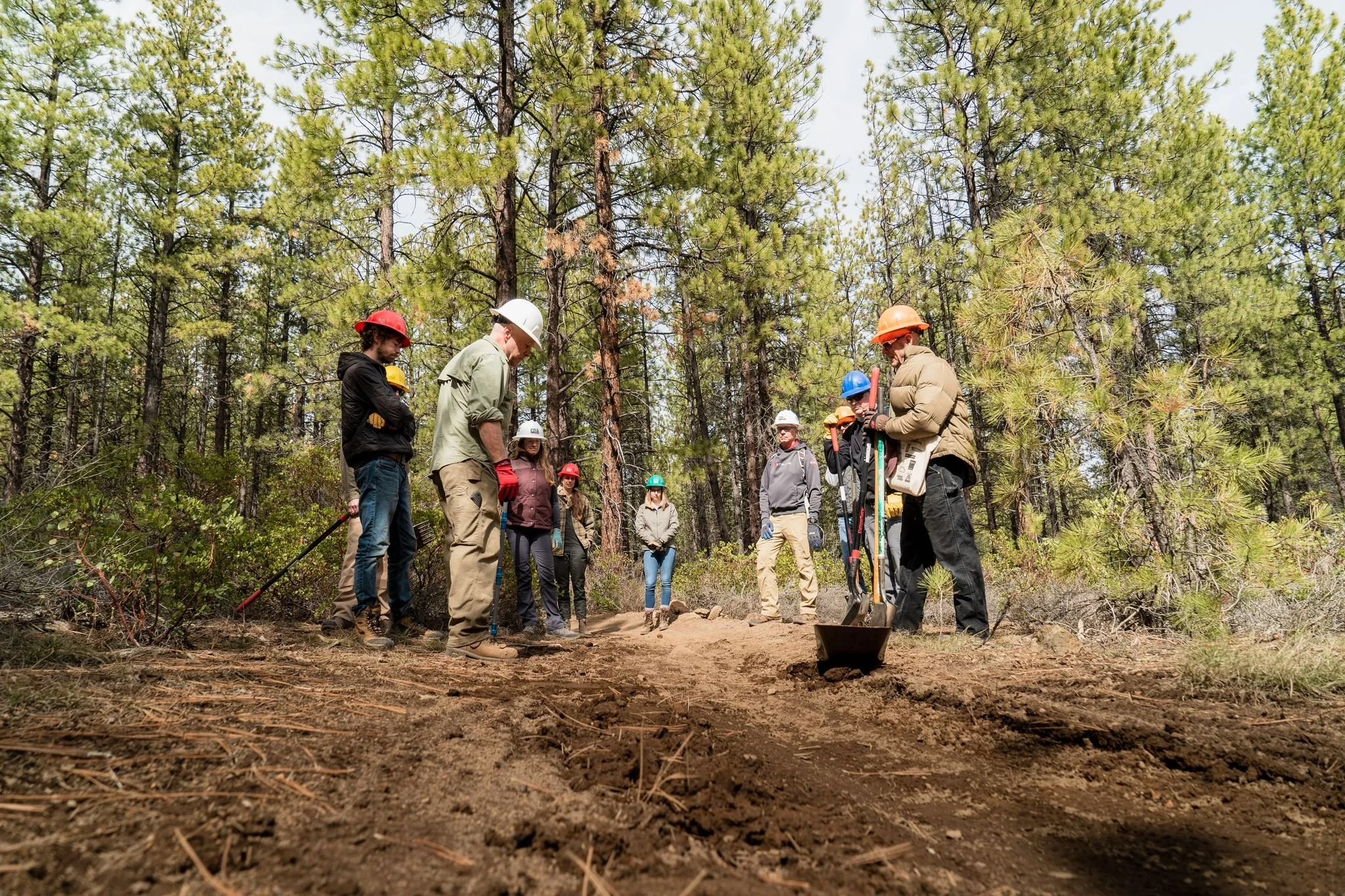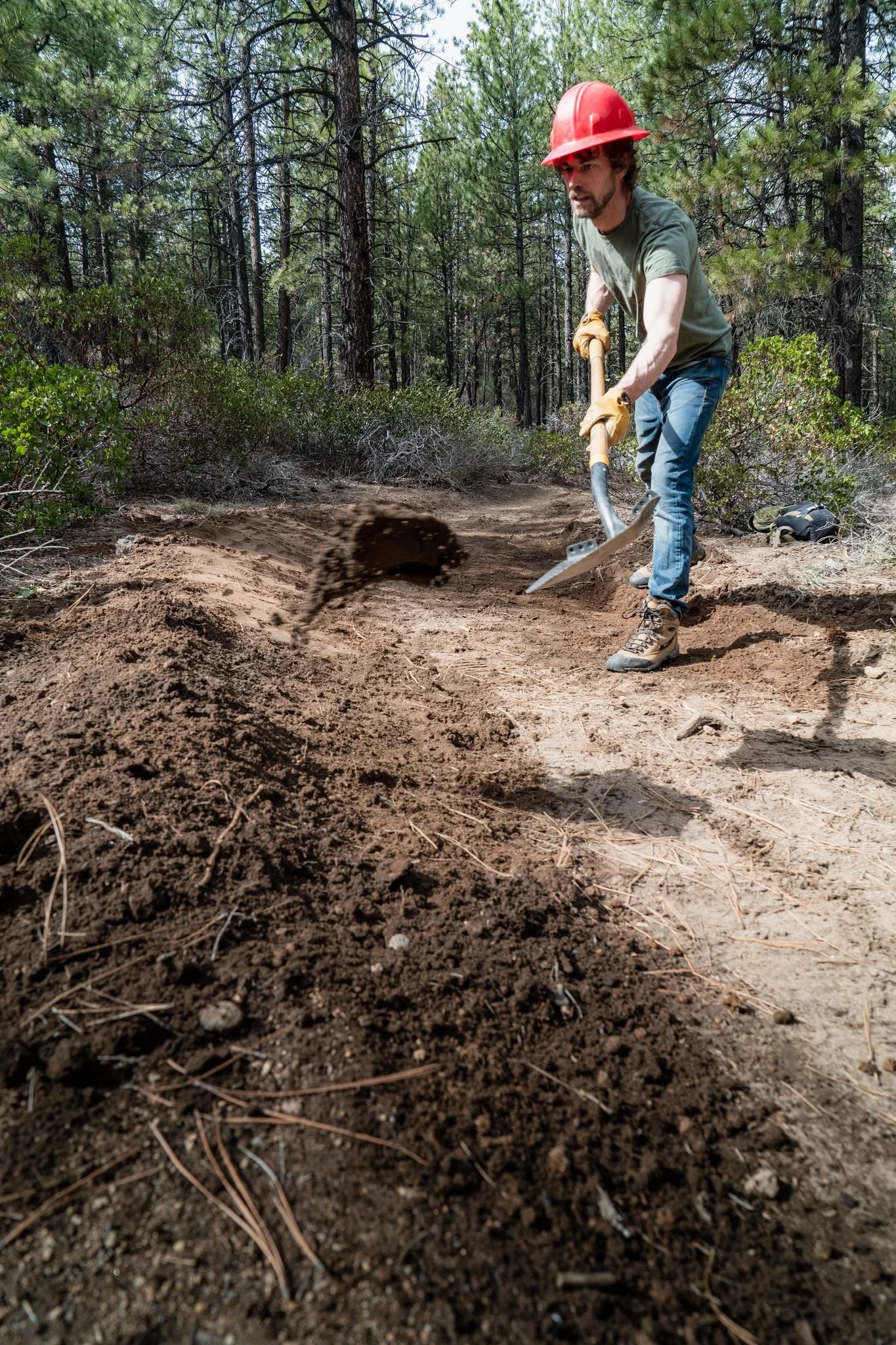Do Unsanctioned Trails Hurt Mountain Biking?
Discovering an Unsanctioned Trail: Why Riders Are Tempted by Illegal Singletrack
Several Saturdays ago, I set out on a mission to ride one of the only trails I hadn’t explored at one of the local trail systems. The trail has some mixed reviews and is at the very end of a ridge, so I just hadn’t made it out there. Excitedly, I set out, anticipating a new descent.
I climbed steadily along the ridge, passing the trail I normally descended, and continued on. I hadn’t yet gone past this point on the ridge and was surprised when I quickly came upon a trail, tearing down the butte to my right. Figuring this was the trail I was looking for, I turned and went down.
Upon reaching the bottom, I was not where I was expecting to be, and took a second to get my bearings. I pulled out Trailforks and realized the trail I was initially looking for was almost 2 more miles along the top ridge. The trail I just descended was unmarked and not on the map. It was an unsanctioned trail, and it totally ripped.
But the drive back home was filled with my typical moral dilemma: considering all the hard work of our local trail alliances, should we be riding unsanctioned trails? Do building and riding unsanctioned trails hurt mountain biking?
I continued to explore my moral dissonance over the next few days. I would remember how rad the trail was, but at the same time, I couldn’t help but imagine that getting legitimate trails built is a hard process. Rather than continuing to juggle these, I set out, maybe not to find answers, but perhaps to find greater awareness.
How Legal Mountain Bike Trails Are Built: The Complex Approval Process
To ease my dissonance, I sought to have a better sense of the trail-building process. Alex Brieger, Trails Program Manager of Central Oregon Trail Alliance (COTA), was kind enough to grab a cup of coffee with me, and hear me out. COTA is located in Bend, Oregon, and oversees some 600+ miles of singletrack in and around Bend. Needless to say, Brieger and the folks at COTA have a big job.
The process that goes into getting a trail built is much bigger than most people would imagine. Brieger spoke of a multi-year timeframe for getting trails built, with 5 years being the absolute fastest. Granted, COTA builds almost exclusively on public land, which means working with the federal government. So, we chatted about what that process looks like.
“When it comes to building new trails, we are looking at the reason. Do we need more difficult trails, like blue and black? Do we need to eliminate conflict by adding directional trails? Trails are filling a need,” Brieger explained. “We tend not to propose just a single trail. We propose an entire plan, with multiple trails, taking into account things like wildlife and logging, since we’re working with the Forest Service.”
Brieger told more of the sequence of events. The proposal is put together, explaining the needs and their justifications. Time is spent in the field, walking routes, mapping, considering the terrain and trail characteristics.
The proposal then goes to the Forest Service, and they begin the process of having their specialists look at the proposed area. These are biologists, hydrologists, archeologists—”Yeah, all the ‘-ologists,’” as Brieger put it. It is required for the public to be notified, giving them an opportunity to consider and comment on the proposal as well.
If the green light is given, flagging begins, based on the tweaks made by specialists as they considered environmental factors. One final review based on the new parameters, and digging can begin. “It would be 5 years for one trail, but with the package, it tends to take longer, like 7 to 10 years,” Brieger told me.
Five to seven years can be a very long time to wait for trails to be built. As you can probably imagine, this can be a reason trail builders just covertly build.
What Counts as an Unsanctioned Trail? Understanding the Definition and Risks
Unsanctioned mountain bike trails are trails built without the knowledge, and permission, of the land manager. This could be a land owner if built on private land, or a government agency such as the Forest Service if the trail is built on public land. Either way, permission was not granted and the typical processes were not followed. The trail is illegal.
Trails such as this are typically off the beaten path. They are found off old service roads being reclaimed by the forest. While happening upon them isn’t impossible, usually, the entrance to these trails isn’t easy to find. And, if you do stumble upon one, it will likely push far past the limits of your riding ability.
Not everybody is invited. Typically, you have to know somebody with first-hand knowledge of the trail. This doesn’t mean a person who has ridden the trail, as if they just accidentally stumbled upon it one day. No, I’m talking about knowing somebody who is a part of the society, has intimate knowledge of the process of building that trail and has the “ok” to make an invite. Within the mountain bike community, you likely won’t hear many riders speaking of unsanctioned trail locations.
Leave your GoPro at home, and don’t take pictures. For God’s sake, do not log this ride onto your Strava account when you get back to the vehicles. If you were lucky enough to hear the whispers and be extended an invite, these actions would most likely ensure being asked not to return.
The Hidden Culture Behind Rogue Trail Building and Secret Trails
In many ways, mountain biking finds its genesis in these unsanctioned trails. Pioneers took to the mountains and began to carve singletrack in its hills. They were rebels and outcasts, folks on the fringes of society who are responsible for so much good.
Over the years, a push toward legitimacy had mountain bikers forming groups and building relationships with different agencies. They worked with land managers and jumped through incredible hoops to provide us all with access to thousands of miles of trails. Regardless of there being more options than ever, unsanctioned trail building continues.
“The big reason unsanctioned trails pop up is that organizations and land managers are not meeting the needs of riders,” Brieger told me. Using Bend as an example, he explained how our area had many pedal-friendly beginner to intermediate trails. Most of the unsanctioned trails are in response to that—they tend to be steep and fast, leaning toward black and double-black diamond.
When an organization like COTA is looking to build a trail, they are also thinking through an equity lens, making sure there are a proportionate number of trails that the everyday rider can access. With more advanced riders wanting faster trails with bigger features, they often set out on their own, creating trails that are designed “for the rider and maybe 10 of their friends,” as Brieger put it. An argument can easily be made that this isn’t creating an inclusive environment, but is this the only problem?
Do Unsanctioned Trails Harm the Sport? Impacts on Access, Wildlife, and Public Perception
Whether the trails are crossing boundaries from private to public land, going through owl nesting habitats, or traversing too close to watersheds, unsanctioned trails seem to hurt mountain biking the most through their public perception and relationships with land managers.
“When an unsanctioned trail is found and grows in popularity, people get attached and a battle begins because the trail is inevitably running through some protected habitat, and the Forest Service has to shut it down,” Brieger explained. “They tear it out, it gets rebuilt. They tear it out again, it gets rebuilt again.” This obviously doesn’t help in maintaining the relationship the trail organization has worked so hard for.
How Unsanctioned Trails Jeopardize Legal Trail Development and Community Trust
“A trail could hurt wildlife, then you get into the sustainability and other impacts, and that is where land managers and the public begin to look at trail organizations like COTA, saying ‘Hey, what’s going on out there?’ It starts to shrink the opportunities we get to build legal trails.” Organizations like COTA have spent the last 30 years building relationships with the community. Unsanctioned trails have the potential to jeopardize that investment.
A Path Forward: How Riders and Rogue Builders Can Work With Trail Organizations
Are there any solutions? Brieger hopes more trail builders would be willing to come to the table. “I’m trying to figure out how to bridge the gap between unsanctioned trail builders and COTA. I’d love to know what their ideas are because I would like to get them involved.” Brieger hopes that builders would be willing to work within the system to get their style of trails built. They want to meet the needs of all riders.
“The best thing to do is get involved in your local trail organizations. People that show up and put in the time get their voices heard.” Brieger used an example of The Lair, a dirt jump and freeride park in Bend that COTA oversees. A Bend local and COTA board member helped move the approval process along for The Lair. “He got involved, got on the board, and helped advocate for a riding style, his riding style.”
Patience seems to be the name of the game though. And Brieger and COTA absolutely realize this aspect, “It does take some time and that’s where a lot of the frustration comes in, and we totally understand. That’s where people take a shovel in their hand, and start digging. That only hinders the process.”
Riders’ Responsibility: Protecting Trails, Wildlife, and Community Relationships
For me, it is pretty obvious, when taking a whole picture perspective, that building and riding unsanctioned trails hurts mountain biking. I don’t want to be responsible for perpetuating a reason for poor public perception. I don’t want my local trail advocacy group dealing with calls and complaints on my behalf. I’m stoked to live in a place where I’m 20 minutes from hundreds of miles of singletrack, and that is all thanks to them. I don’t want to take that for granted.
Yet, it is hard not to consider the roots that mountain biking grew from. These were people who let their tires lead as they carved out the foundation of the sport. That freedom really resonates with me. However, I do find that we have a greater responsibility as mountain bikers. We have a responsibility to the land which we use, to protect and care for it as best we can. We have a responsibility to wildlife, to make sure future generations of offspring are healthy. And we have a responsibility to the community to demonstrate how mountain biking can be a life-giving force to an area.
We have a responsibility to do what we can and act wisely. So, as much as it pains me, I think that will be my last lap down the mystery trail I so enjoyed.
Subscribe to Trail Builder Magazine and unlock exclusive perks from brands who support the work you do. This article appeared in Volume 1, Issue 1 of Trail Builder Mag.
Travis Reill
I’m Travis, a teacher turned stay-at-home dad turned freelance writer. I returned to mountain biking at a critical time in my life and it quickly became my passion once again. I feel fortunate to get to share my thoughts, ideas, and adventures on two wheels. See you on the trails!










